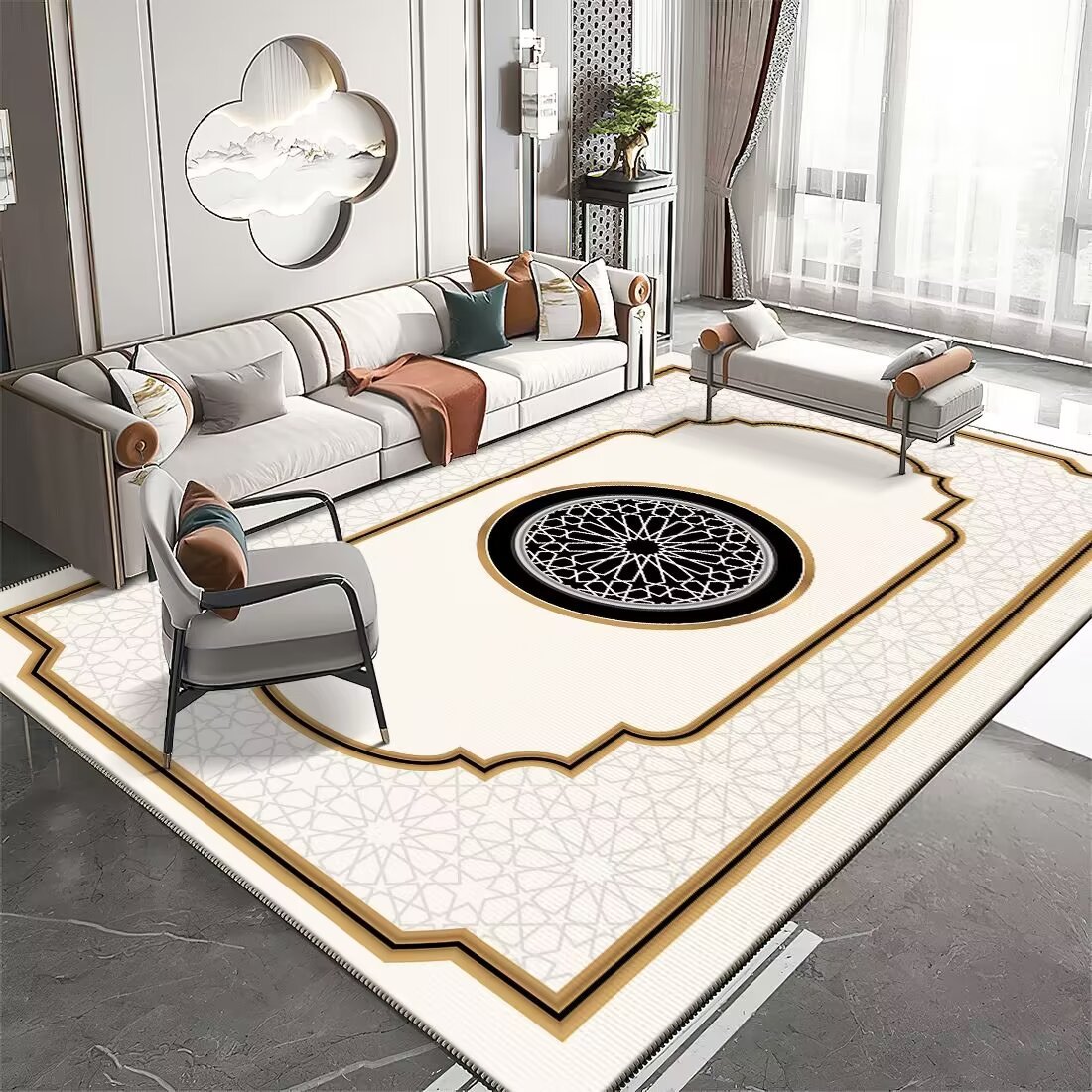The Ultimate Guide to Carpets: Everything You Need to Know
2024-11-20
Carpets are a timeless and practical element in home and office décor, providing warmth, comfort, and style. They come in various types, materials, textures, and colors, making them versatile and customizable for any space. Whether you're looking to install new carpets or care for existing ones, understanding the ins and outs of carpets can help you make informed decisions.
This ultimate guide will cover everything you need to know about carpets, from types and materials to installation and maintenance.
1. Types of Carpets
Carpets come in a variety of styles, each offering unique characteristics and benefits. Understanding the different types of carpets can help you choose the right one for your needs.
a) Cut Pile
Cut pile carpets are made by cutting the yarn loops, resulting in a soft, plush surface. They are popular for their luxurious feel and come in several variations:
Saxony: Known for its smooth, even surface. Saxony carpets can show footprints and vacuum marks.
Frieze: Features tightly twisted fibers that give a curly, textured appearance. Great for hiding dirt and footprints.
Plush: Extremely soft and dense, giving a luxurious feel but more prone to showing marks.
Shag: Long, thick fibers that create a soft, plush surface. This style provides a retro aesthetic and is ideal for low-traffic areas.
b) Loop Pile
Loop pile carpets have uncut yarn loops, giving them a more durable surface. They’re a great choice for high-traffic areas because of their ability to resist crushing.
Berber: A popular loop pile style made of thick, short loops. Often found in neutral tones with flecks of color.
Level Loop: Features evenly sized loops and is often used in commercial or high-traffic residential spaces.
Multi-level Loop: Includes loops of different heights, creating a textured appearance, making it both durable and stylish.
c) Cut and Loop Pile
This carpet type combines both cut and looped yarns to create a textured pattern. The combination of the two types adds visual interest and depth.
2. Carpet Materials
The material of the carpet affects its appearance, feel, durability, and maintenance. Here are the most common materials used in carpets:
a) Nylon
Nylon is the most popular carpet material due to its durability, resilience, and ease of maintenance. It’s resistant to wear, stains, and fading, making it ideal for high-traffic areas.
b) Polyester
Polyester is a soft, affordable material known for its vibrant colors. It resists stains well but can be less durable than nylon, especially in high-traffic areas.
c) Olefin (Polypropylene)
Olefin is a highly durable, moisture-resistant material, making it ideal for basements and outdoor areas. However, it can show dirt and wear over time, making it better for low-traffic areas.
d) Wool
Wool is a natural, luxurious material that feels soft and warm underfoot. It’s highly resilient, long-lasting, and biodegradable. However, wool carpets tend to be more expensive and require more maintenance.
e) Triexta
Triexta is a newer material that offers the softness of polyester with the durability of nylon. It is resistant to stains, mold, and mildew, making it an excellent choice for homes with children and pets.
f) Acrylic
Acrylic carpets resemble wool in texture and appearance, offering a soft feel. They’re resistant to fading and mildew, making them a good choice for moisture-prone areas.
3. Carpet Construction
Carpets are made up of several key components, each contributing to their feel, durability, and longevity:
Pile: The visible fibers of the carpet that provide softness and texture. The height, density, and twist of the pile affect the carpet’s appearance and performance.
Backing: The foundation that holds the fibers together. There are two layers: primary (supports the fibers) and secondary (provides additional strength).
Padding: The cushioning beneath the carpet, typically made from foam, rubber, or felt. Good padding adds comfort, insulation, and extends the life of the carpet.
4. Choosing the Right Carpet for Your Space
When choosing a carpet, consider the following factors:
Traffic: High-traffic areas (like hallways, living rooms, and offices) require durable carpets, such as nylon, with a tight pile for better wear resistance.
Comfort: If you want something soft and luxurious, opt for cut pile styles like plush or Saxony in wool or Triexta.
Maintenance: Consider stain resistance and ease of cleaning, especially if you have children or pets. Nylon and polyester are easier to maintain.
Color: Lighter shades can make rooms feel larger and brighter, while darker shades can add warmth and intimacy. Patterns and textures can hide stains and dirt.
Budget: Wool carpets are premium, while synthetics like polyester and nylon are more affordable.
5. Installation Process
Carpet installation requires a bit of preparation. Here's a general overview of the process:
a) Preparation
Before installation, ensure the subfloor is clean, dry, and level. Remove any old carpeting and furniture. It’s often recommended to use a professional installer for the best results.
b) Padding Installation
Padding is typically installed before the carpet. It’s laid down and trimmed to fit the room.
c) Carpet Laying
The carpet is unrolled and stretched over the padding. It is secured to the floor using tack strips around the perimeter of the room, ensuring a tight, smooth fit.
d) Finishing Touches
The edges are trimmed, and seams are smoothed out. Carpet can be finished with a variety of techniques, including binding, seaming, and edge serging.
6. Carpet Maintenance
Proper care can extend the life of your carpet. Here are some essential maintenance tips:
a) Regular Vacuuming
Vacuuming removes dirt, debris, and pet hair. It’s essential to vacuum high-traffic areas at least 2-3 times a week and less frequently in low-traffic zones.
b) Spot Cleaning
Clean up spills immediately with a blotting motion (never scrub). Use a mild detergent or carpet cleaner to treat stains. For tough stains, professional cleaning might be required.
c) Deep Cleaning
At least once a year, have your carpet deep cleaned using hot water extraction or steam cleaning. This helps remove built-up dirt and allergens.
d) Protective Measures
Use rugs in high-traffic areas to reduce wear. Furniture pads can prevent indentations, and entryway mats help reduce dirt tracked into the house.
7. Sustainability and Eco-Friendly Options
Many carpet manufacturers are now offering sustainable options. Look for carpets made from recycled materials, such as PET (recycled plastic bottles) or wool, which is biodegradable.
a) Recycled Content Carpets
Carpets made from recycled content help reduce environmental impact. PET is a popular choice, as it is durable, stain-resistant, and eco-friendly.
b) Low-VOC Carpets
Volatile Organic Compounds (VOCs) are chemicals found in carpets that can off-gas into the air. Choose carpets labeled as low-VOC or VOC-free to improve indoor air quality.
c) Durability
Opt for long-lasting, durable carpets that can withstand wear and tear, reducing the need for frequent replacements.
8. Carpet Trends in 2024
In 2024, carpet trends reflect both functionality and design:
Textured and Patterned Carpets: Unique textures and geometric patterns are in demand for both modern and contemporary spaces.
Sustainable and Eco-Friendly Carpets: More people are choosing carpets made from natural fibers and recycled materials.
Neutral Colors with Bold Accents: Earthy tones, muted grays, and soft pastels are popular, complemented by bright accent rugs for contrast.
Smart Carpets: Carpets with integrated sensors that can monitor the temperature and humidity of a room are making waves in tech-savvy homes.
Conclusion
Carpets are an essential part of any home or office, offering warmth, comfort, and style. From understanding the different types, materials, and textures to knowing how to maintain them, this guide equips you with the knowledge needed to make the right choices for your space. Whether you’re looking for durability, comfort, or eco-friendliness, there’s a carpet solution for every need and every budget. Happy carpeting!



